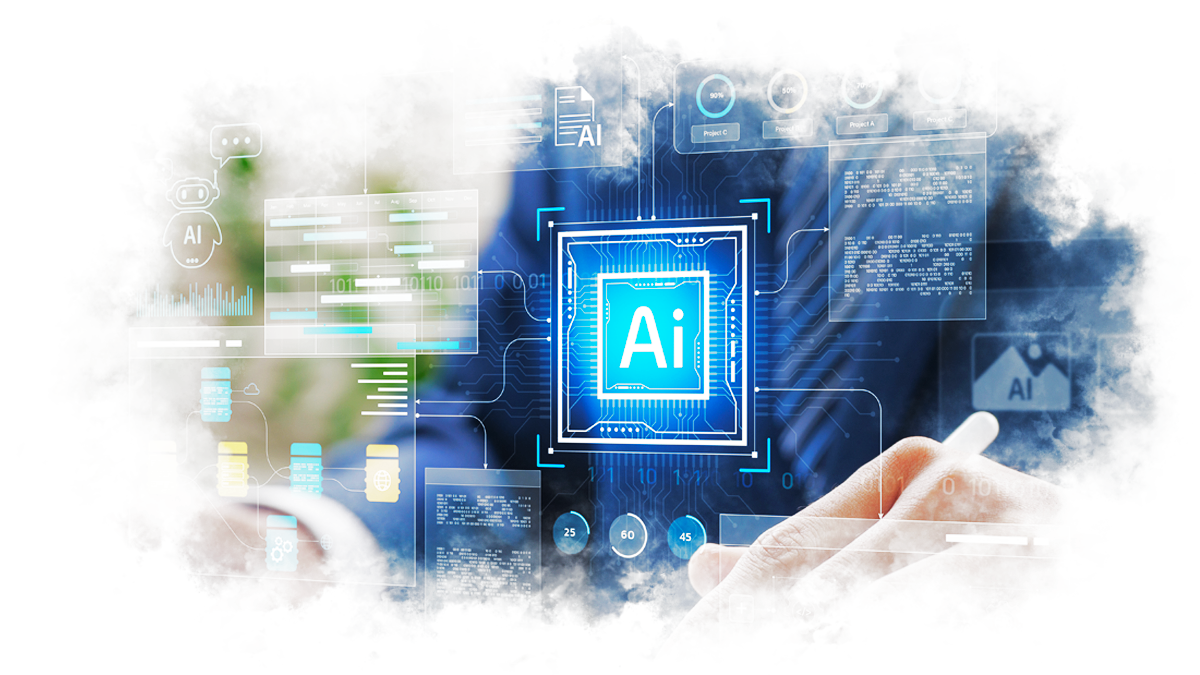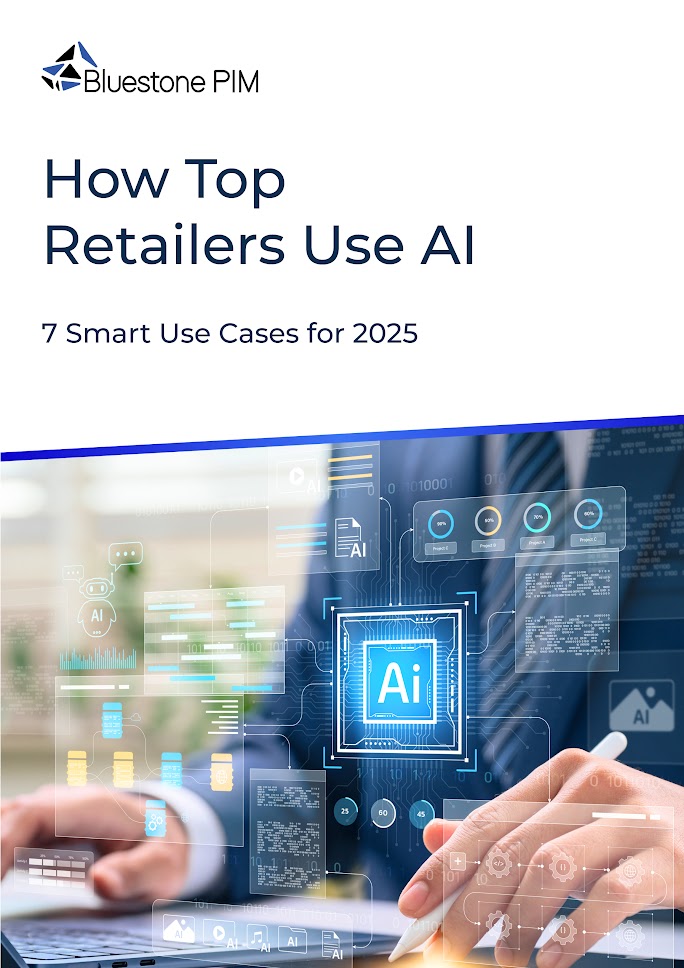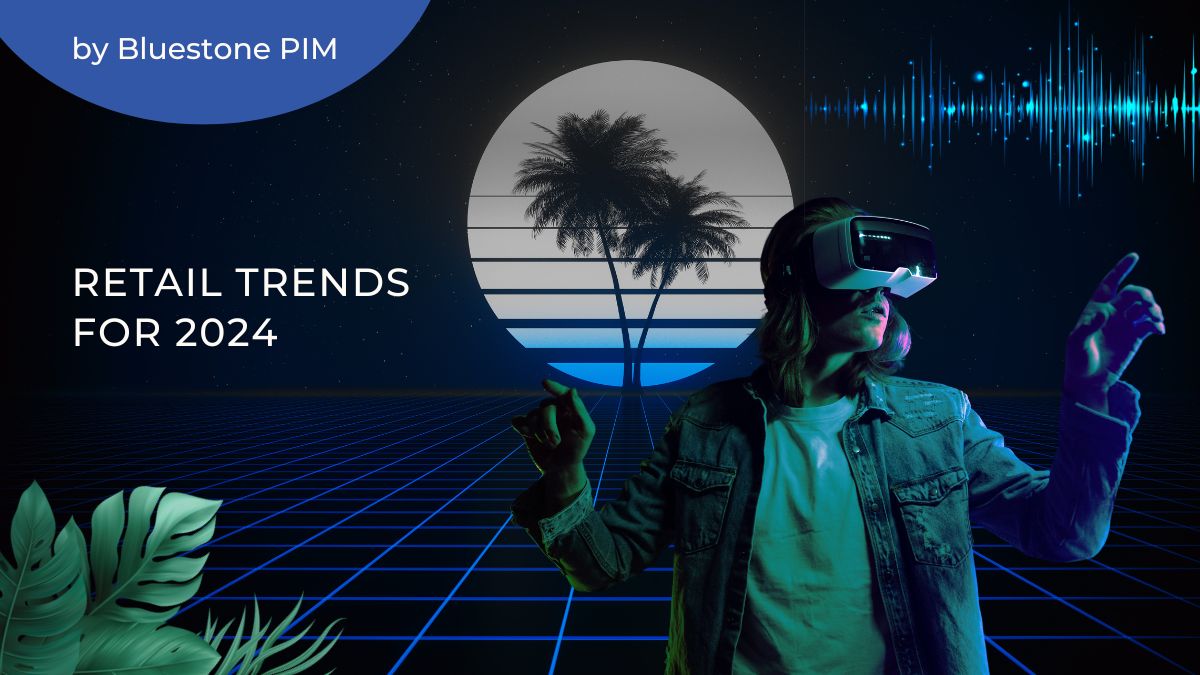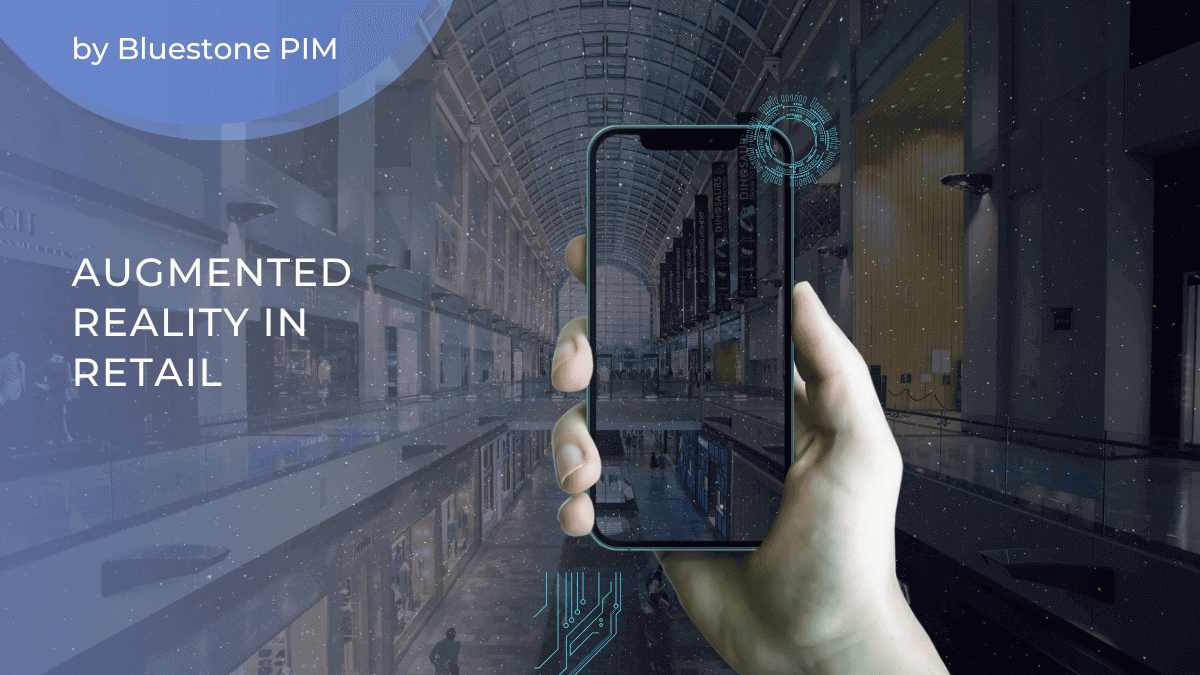AI Trends in Retail 2025: What Retail Leaders Need to Know

Managing thousands of SKUs in Ecommerce?
Get monthly tips to become the e-commerce pro your team needs.
The global AI in retail market is expected to reach USD 14.24 billion in 2025, growing at a 46.5 % CAGR to USD 96.13 billion by 2030 .
That growth tells you one thing: AI is scaling really fast and it’s genuinely changing how retailers think, work, and serve their customers.
In this article, we break down the future of AI in retail, with real-world examples and the most impactful generative AI use cases leading the way.
Want the full story?
Get the exclusive PDF with all the latest AI trends, actionable insights, and bonus use cases, everything you need to stay ahead:

DOWNLOAD FREE E-BOOK
7 Smart AI Use Cases for 2025
Packed with real examples, practical tips, and the tools behind the strategies, this e-book is a must-read for retail and e-commerce leaders who want AI to really work for their business.
Trend 1: Personalisation with AI: The New Standard for Customer Experience
Companies that deliver personalisation at scale typically achieve 5–15% higher revenue growth. Retailers that excel at AI-driven personalisation can generate up to 40% more revenue compared to less advanced competitors.
Retailers are using artificial intelligence to analyse customer data like browsing, buying history, and even location to suggest the right products at the right time. Amazon, ASOS, and especially Sephora lead the way with personalisation.
Personalisation increases customer loyalty, drives conversions, and helps build long-term relationships. In 2025, customers expect brands to recognise them and respond to their preferences.
Sephora: How Is AI Used in Retail for Personalisation?
Sephora shows how AI in retail works in real life. With tools like Virtual Artist and Smart Skin Scan, Sephora uses artificial intelligence to recommend products and match skin tones. Their MACH-based system helps them deliver personalised experiences across all their stores and online.
Smart Skin Scan
This AI-powered tool assesses seven key categories, including fine lines, dark spots, texture, and more. Using deep learning and a database of over 70,000 medical-grade images, it delivers fast and accurate skin analysis for all skin types. The system is proven reliable (95% test-retest rate) and follows best practices for data privacy.
 Source: https://www.sephora.com/beauty/skin-analysis-tool
Source: https://www.sephora.com/beauty/skin-analysis-tool
Sephora Virtual Artist
Bringing virtual reality into beauty, this app uses facial recognition to let customers try on products anywhere, exploring endless shades and looks virtually, comparing brands side-by-side, and even following step-by-step tutorials tailored to their own face. It removes the guesswork and improves customer satisfaction.

Source: https://www.sephora.sg/pages/virtual-artist
Here’s How Sephora Delivers Personalisation With AI at Scale
-
ModiFace for Virtual Try-ons: AI-driven facial recognition and AR for real-time product trials.
-
Dynamic Yield: Analyses customer data to instantly recommend relevant products.
-
commercetools: MACH-based architecture supports real-time, scalable personalisation both online and in-store.
Why it Works
Personalisation builds loyalty and drives sales. Research shows 81% of consumers are more likely to buy from a brand that “gets” them, while 70% prefer brands that remember previous interactions. AI in retail turns personalisation from a ‘nice-to-have’ into a revenue driver.
Discover more real-world AI use cases in retail by downloading our free e-book.
Trend 2: Smarter Search and Product Discovery
A major part of artificial intelligence in retail industry success is helping shoppers find what they want quickly. In 2025, AI-powered search engines can handle typos, slang, or long-winded questions (“What’s a good birthday gift for a science-mad 12-year-old?”).
Walmart, The Home Depot, and Zalando all use AI to deliver better results, faster. For retailers, this means higher conversion rates and fewer abandoned baskets.
Zalando: Smarter Search with AI
Zalando has built an AI assistant that truly understands fashion-specific queries—not just keywords. The system uses natural language processing (NLP) and semantic search to interpret intent, context (like budget or season), and detailed attributes such as colour, fit, or style.
What sets Zalando’s assistant apart is its training on fashion data: product descriptions, user behaviour, and tags unique to how people shop on the platform. As a result, it can handle complex searches like “red dress under €50 with long sleeves,” showing relevant options even when customers don’t use precise terms.
Recent Updates:
-
A new look & feel makes the experience more dynamic, engaging, and visually aligned with Zalando’s brand.
-
Deeper personalisation connects the assistant to each user’s account, so recommendations take into account individual shopping history and preferences. In pilot testing, this led to a 40% increase in high-value interactions such as adding items to the cart or “liking” products.
-
Context awareness means the assistant knows where customers are on the site or app. For example, if you’re browsing women’s denim, it prompts with, “I see you are interested in Women’s jeans,” suggesting relevant styles or helping you refine your search.
Why it Works
Better search improves conversion rates and reduces bounce. Customers find what they need faster and spend more when search understands their intent — which matters, as 31% of them expect help from a virtual assistant when choosing what to buy.

Trend 3: Automated Content Generation: Generative AI Use Cases in Retail
Managing product descriptions, translations, and localised content can be time-consuming. This is where generative AI use cases in retail are having a big impact. AI features, such as those found in Bluestone PIM, now create and translate listings in bulk, allowing retailers to scale product content and improve quality without extra manual work.
eBay and Decathlon use generative AI to keep content up to date and accurate, leading to faster launches and a better customer experience.
Discover the cost difference between manual product data enrichment and AI-driven enrichment.
Number of products requiring description
Average Word Count per Product Description
Manual/Human Copywriting Cost per Word
Your Current Cost Estimation:
$ for human copywriting of words to create product descriptions.
The AI calculates costs based on the number of input and output tokens, with each token representing approximately four characters. The cost per token varies depending on the model used.
Basic GPT Model: Less powerful, lower cost, produces simpler or less detailed responses, and might be faster due to smaller size or fewer computations.
Advanced AI Model: More powerful, higher cost, produces higher-quality and more detailed responses, but could be slower because of increased computational complexity.
Pricing for AI models often decreases with each new release, making advanced processing more cost-effective over time.
Bluestone PIM AI Enrich estimation
- With Basic AI model $
- With advanced AI model $
Trend 4: Demand Forecasting and Inventory Management
AI in retail is also transforming supply chain efficiency. By analysing sales trends, weather, and local events, artificial intelligence predicts demand and optimises stock.
Target, Nike, and Zara are using retail AI to reduce overstock and avoid empty shelves. This is one of the most practical AI use cases in retail for cutting costs and keeping customers satisfied.
Nike: Inventory Optimisation Powered by Predictive Analytics and AI
Nike has made strategic investments in artificial intelligence, generative AI, and advanced data analytics to streamline its entire supply chain and boost product innovation. Their approach centres on predictive analytics, using vast datasets, such as historical sales, seasonal trends, campaign performance, social media sentiment, and even weather patterns to accurately forecast demand.
Some of Nike’s standout AI-driven initiatives include:
-
Nike Fit: Introduced in 2019, this combines computer vision and machine learning to help customers find the perfect shoe fit, reducing returns and supporting inventory accuracy.
-
Real-Time Inventory Tracking: Nike maintains a live overview of stock levels across all stores and distribution centres, allowing rapid response to demand changes or supply disruptions.
-
Dynamic Pricing and Automated Replenishment: AI models enable Nike to adjust prices and restock inventory based on real-time demand and competitor activity, all with minimal manual intervention.
-
Supplier Collaboration: By sharing forecasts and inventory data with suppliers, Nike shortens lead times and improves production planning.
Why it Works
Smarter forecasting leads to better stock availability, fewer markdowns, and lower carrying costs. Using AI to predict supply needs can cut errors by 20–50% and reduce lost sales and stockouts by up to 65%. It also helps teams respond faster to demand shifts.
Trend 5: Dynamic Pricing: Staying Competitive
AI in retail industry pricing is more dynamic than ever. AI models now adjust prices in real time based on demand, competitor activity, and stock levels.
Retailers like Wayfair and Instacart are seeing increased margins by trusting AI to manage pricing decisions. This approach is becoming standard in online retail and is a key part of the future of AI in retail.
Why Retailers Need to Act Now
In 2025 AI is already helping leading retailers meet growing demands by streamlining operations, improving decision-making, and accelerating time to market. The retail AI market is expected to be worth approximately USD 127.2 billion in 2033, compared to USD 9.3 billion in 2023 (CAGR: 29.9%).
For company owners and e-commerce specialists, this means it’s time to pay close attention to what is the role of AI in online retail.
Our new e-book How Top Retailers Use AI: 7 Smart Use Cases for 2025 is packed with practical advice, generative AI use cases in retail, and lessons from brands already leading the way. If you want a deeper look at how artificial intelligence is changing retail, this is the resource for you.
Download the e-book today to see what’s working and how you can make the most of AI trends in retail for your business, or connect with our team for expert advice tailored to your needs.



![6 Pivotal Benefits of AI for Retail [+ Use Cases from Top Brands]](https://www.bluestonepim.com/hubfs/6-Pivotal-Benefits-of-AI-for-Retail-1.png)

